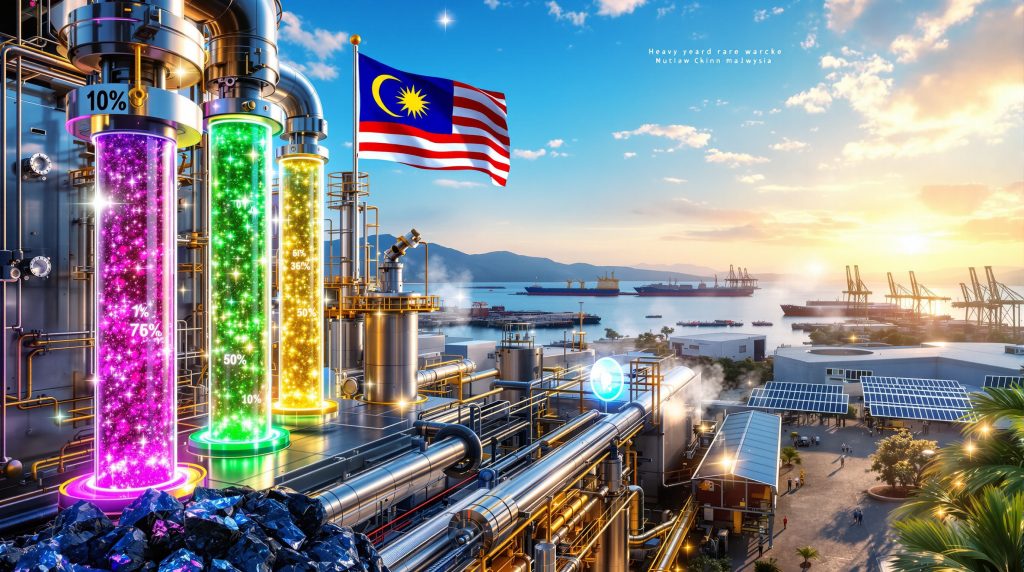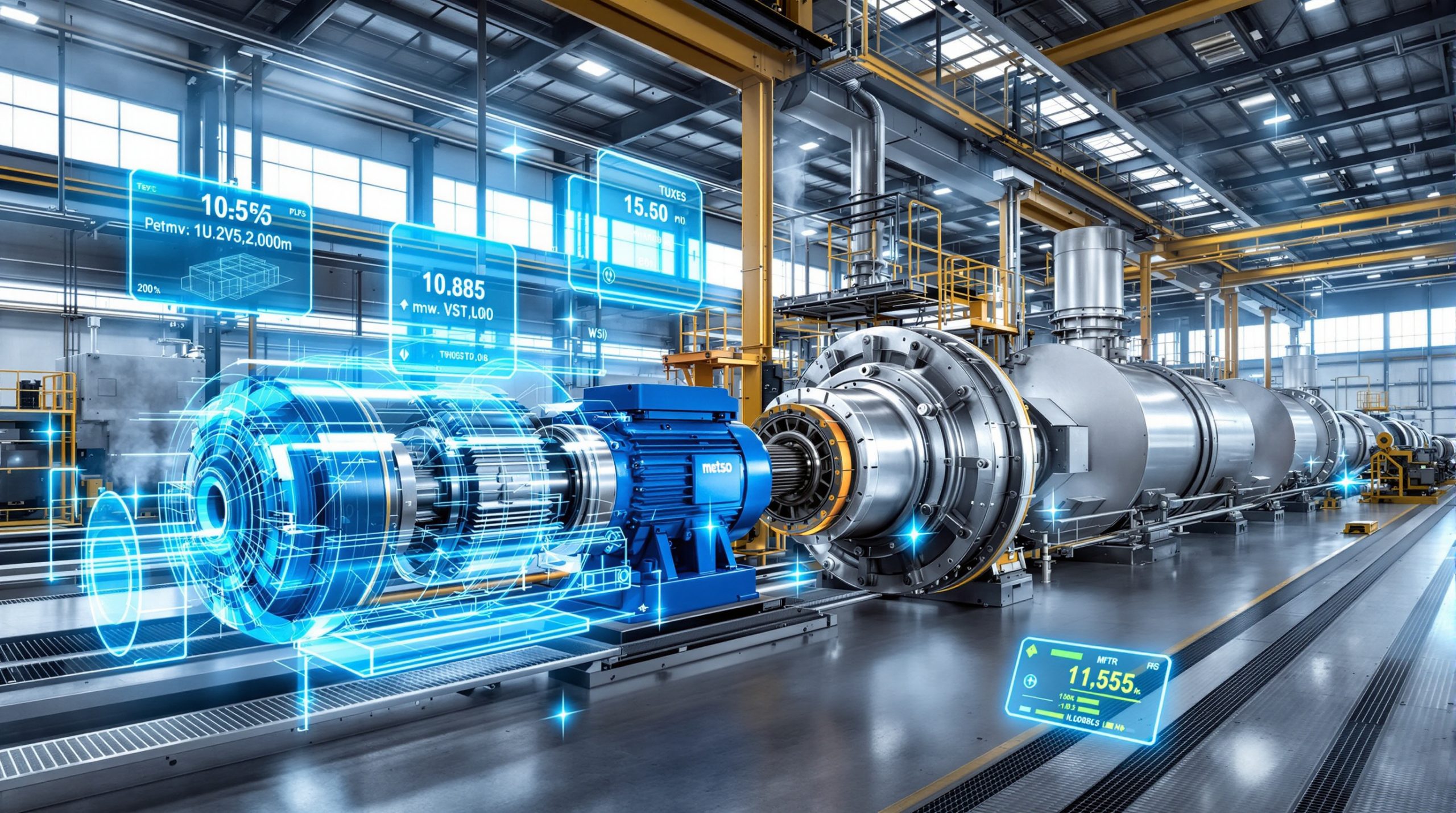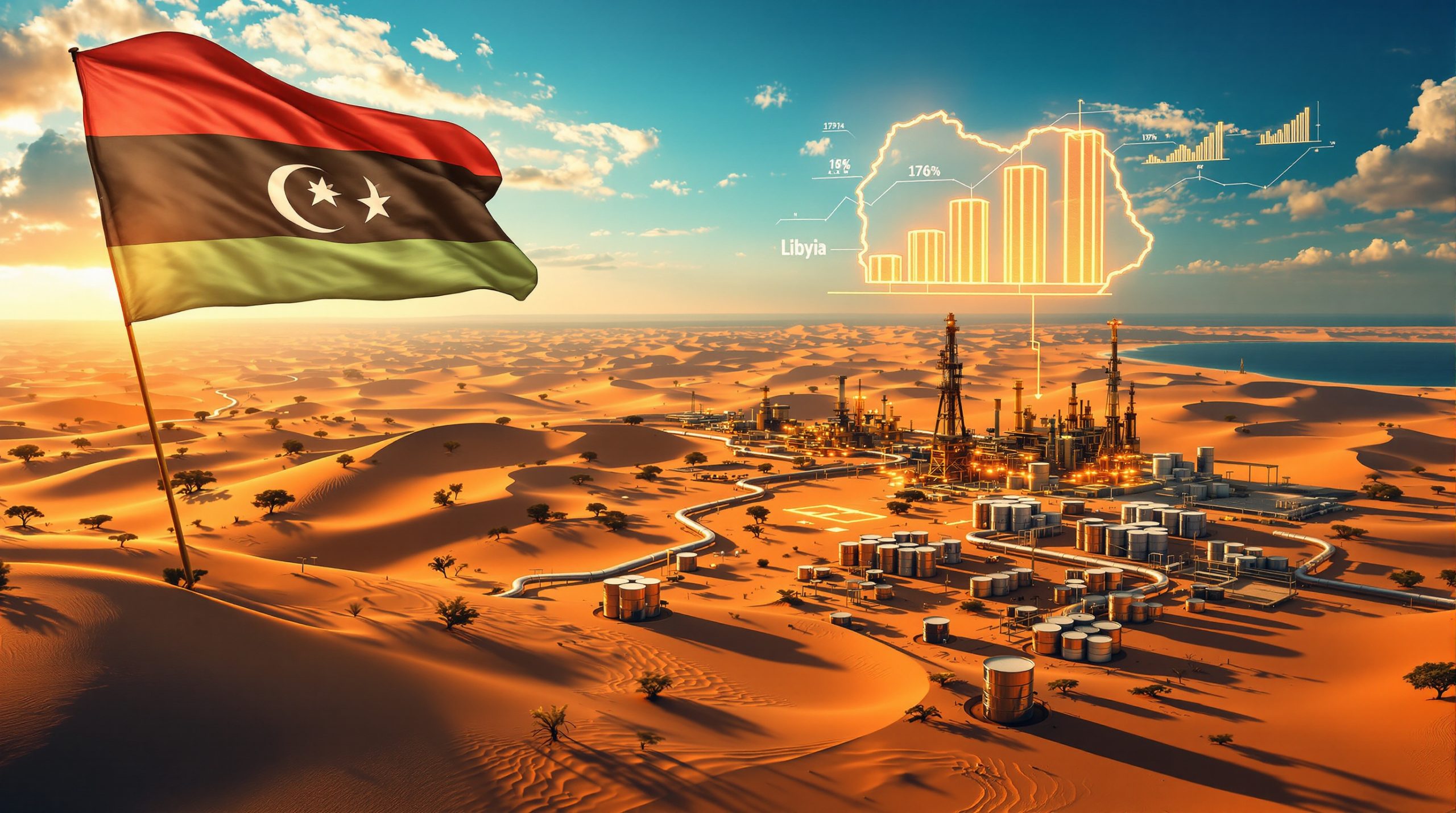Understanding Heavy Rare Earths Processing in Southeast Asia
Heavy rare earth elements represent critical materials that power advanced technologies across multiple industries. Unlike their lighter counterparts, these elements possess unique magnetic and optical properties that make them irreplaceable in high-performance applications. The processing of these materials has historically been concentrated in a single region, creating supply chain vulnerabilities that manufacturers and governments worldwide are now addressing through strategic diversification initiatives.
Malaysia's emergence as a processing hub for heavy rare earths marks a fundamental shift in global supply dynamics. The country's heavy rare earths separation facility in Malaysia represents more than industrial development; it embodies a strategic response to growing demand for supply chain resilience in critical materials. This facility utilises advanced separation technologies to process feedstock containing valuable elements essential for modern technology applications.
Key Heavy Rare Earth Elements and Applications:
| Element | Symbol | Primary Applications | Global Demand Growth |
|---|---|---|---|
| Dysprosium | Dy | Permanent magnets, wind turbines | 8-12% annually |
| Terbium | Tb | Fluorescent lighting, electronics | 6-10% annually |
| Holmium | Ho | Laser technology, medical devices | 5-8% annually |
| Erbium | Er | Fiber optic amplifiers | 7-9% annually |
| Samarium | Sm | High-temperature magnets | 7-11% annually |
The Malaysian facility's capacity to process 5,000 tonnes of heavy rare earth feedstock annually positions it as a significant player in the global market, according to recent industry announcements from The Motley Fool Australia (October 29, 2025). This processing capacity addresses approximately 20% of current global demand for separated heavy rare earth oxides, providing manufacturers with critical supply diversification options.
How Does Malaysia's Processing Infrastructure Support Global Supply Chains?
The Gebeng Industrial Estate in Kuantan, Pahang, has evolved into Southeast Asia's premier rare earth processing hub through strategic infrastructure investments and regulatory frameworks. The heavy rare earths separation facility in Malaysia benefits from multiple logistical advantages that enhance its competitiveness in serving global markets.
Infrastructure Advantages:
-
Deep-water port facilities at Port Kuantan enabling efficient feedstock imports from Australia and other sources
-
Established industrial utilities including reliable power supply and water treatment systems
-
Proximity to major Asian manufacturing centres, reducing transportation costs and delivery times
-
Comprehensive waste management infrastructure designed for rare earth processing operations
-
Government support through the Malaysia Investment Development Authority (MIDA) streamlining investment approvals
The facility's strategic location provides access to feedstock from Australia's Mt Weld deposit, which contains both light and heavy rare earth elements in commercially viable concentrations. Industry reports indicate that Mt Weld concentrates contain 15-25% heavy rare earth oxides, making them particularly suitable for specialised separation processes employed at the Malaysian facility.
Furthermore, the development of this critical raw materials facility demonstrates the increasing importance of strategic infrastructure in securing supply chains.
Malaysia's rare earth processing sector operates under stringent environmental regulations, with facilities required to meet international safety standards including ISO 14001 certification and regular third-party environmental audits conducted by independent monitoring organisations.
What Technologies Enable Efficient Heavy Rare Earth Separation?
Modern heavy rare earth separation relies on sophisticated solvent extraction processes that can isolate individual elements from mixed concentrates with high precision. The Malaysian facility employs multi-stage separation circuits designed to maximise recovery rates whilst minimising environmental impact through closed-loop processing systems.
Separation Process Overview:
-
Feedstock Preparation: Mixed rare earth concentrates undergo initial purification to remove impurities such as thorium and uranium
-
Solvent Extraction: Multiple extraction stages using specialised organic compounds separate individual heavy rare earth elements
-
Precipitation: Elements are converted to oxide form through controlled precipitation processes
-
Quality Control: Purity testing ensures products meet 99.9%+ grade specifications required for high-tech applications
The separation technology employed can process ionic clay deposits containing up to 60-80% heavy rare earth content, significantly higher than traditional hard rock deposits. This processing capability allows the facility to utilise diverse feedstock sources, including potential future supplies from Malaysian ionic clay deposits currently under exploration.
Advanced automation systems monitor the separation process in real-time, adjusting parameters to optimise recovery rates and product quality. These systems can detect purity variations within 0.01% accuracy, ensuring consistent product specifications that meet stringent customer requirements across different industries.
Which Global Markets Drive Demand for Malaysian-Processed Heavy Rare Earths?
The facility's strategic positioning serves multiple regional markets, each with distinct requirements and growth trajectories. Understanding these demand patterns helps explain the commercial viability of the heavy rare earths separation facility in Malaysia and its role in global supply chains.
Regional Market Breakdown:
| Region | Primary Applications | Market Share | Growth Rate |
|---|---|---|---|
| East Asia | Electronics, automotive | 45% | 12% annually |
| Europe | Wind energy, industrial magnets | 25% | 8% annually |
| North America | Defence, aerospace | 20% | 10% annually |
| Others | Emerging applications | 10% | 15% annually |
The East Asian market represents the largest demand centre, driven by electronics manufacturing in countries like South Korea, Japan, and Taiwan. These manufacturers require high-purity dysprosium and terbium oxides for permanent magnet production used in smartphones, electric vehicles, and industrial motors.
European demand focuses primarily on wind energy applications, where heavy rare earths enhance the performance of permanent magnets used in offshore wind turbines. Industry data suggests that each offshore wind turbine requires approximately 200-400 kilograms of dysprosium for optimal magnetic performance in harsh marine environments.
Moreover, the critical minerals energy transition highlights the strategic importance of these materials in achieving global energy security goals.
North American markets prioritise defence and aerospace applications, requiring ultra-high purity materials with stringent supply chain security requirements. The Malaysian facility's location outside traditional supply chains provides strategic value for customers seeking supply diversification whilst maintaining quality standards.
How Do Processing Costs Compare Across Different Locations?
Cost competitiveness remains crucial for establishing viable heavy rare earth processing outside traditional supply chains. The Malaysian facility benefits from several cost advantages whilst maintaining high environmental and safety standards required for international market access.
Cost Factor Analysis:
-
Labour Costs: Skilled technical workforce available at 40-60% lower costs than developed markets
-
Energy Costs: Industrial electricity rates of approximately $0.08-0.12 per kWh for large consumers
-
Regulatory Compliance: Streamlined but rigorous approval processes reducing administrative delays
-
Logistics: Reduced shipping distances to key Asian markets saving 15-25% on transportation costs
Processing economics benefit from Malaysia's established rare earth expertise developed over decades of light rare earth operations. This existing knowledge base reduces startup costs and operational risks compared to greenfield developments in other locations.
The facility's $180 million investment, as reported by The Motley Fool Australia (October 29, 2025), demonstrates the substantial capital requirements for advanced heavy rare earth separation capabilities. This investment level reflects the sophisticated technology and environmental systems necessary for competitive operations in global markets.
What Environmental Standards Govern Heavy Rare Earth Processing?
Environmental stewardship has become a critical differentiator for rare earth processing facilities worldwide. The Malaysian heavy rare earths separation facility operates under comprehensive environmental management frameworks that address both local regulations and international best practices.
Environmental Management Framework:
-
Comprehensive Environmental Impact Assessments (EIA) conducted before construction and updated annually
-
Real-time monitoring of air quality with emissions maintained below 50mg/m³ for particulate matter
-
Zero liquid discharge systems preventing contamination of local water sources
-
Community engagement programmes providing transparency on operational activities and environmental performance
-
Independent third-party audits conducted quarterly to verify compliance with international standards
The facility operates under Malaysia's Environmental Quality Act 1974, which requires continuous monitoring of radioactive materials naturally present in rare earth concentrates. Advanced filtration systems ensure that any radioactive elements are safely contained and managed according to International Atomic Energy Agency (IAEA) guidelines.
Heavy rare earth processing in Malaysia operates under strict waste management protocols, requiring facilities to demonstrate that all processing residues are either recycled within the operation or disposed of through licensed waste management contractors with full regulatory oversight.
How Does Feedstock Sourcing Impact Processing Economics?
The economics of heavy rare earth separation depend heavily on securing consistent, high-grade feedstock supplies. The Malaysian facility has developed diverse sourcing strategies to ensure operational continuity whilst optimising processing costs and product quality.
Feedstock Sources and Characteristics:
| Source Type | HREE Content | Processing Complexity | Supply Reliability |
|---|---|---|---|
| Australian Mt Weld | 15-25% | Medium | High |
| Southeast Asian Clays | 60-80% | Low | Medium |
| Recycled Materials | Variable | High | Growing |
The primary feedstock source, Australia's Mt Weld deposit, provides a reliable supply of mixed rare earth concentrates containing both light and heavy rare earth elements. This integrated approach allows the facility to optimise processing efficiency by handling multiple product streams simultaneously.
Future feedstock diversification includes potential ionic clay deposits in Malaysia and other Southeast Asian countries. These deposits typically contain significantly higher concentrations of heavy rare earths compared to hard rock sources, potentially improving processing economics and reducing dependence on imported materials.
Recycled materials represent an emerging feedstock opportunity, particularly from end-of-life permanent magnets and electronic components. Industry estimates suggest that recycled sources could provide 15-20% of global heavy rare earth supply by 2030, creating additional feedstock opportunities for processing facilities.
What Role Does Government Policy Play in Facility Development?
Malaysian government initiatives have created a supportive ecosystem for rare earth processing development that balances economic development objectives with environmental protection requirements. Policy frameworks provide multiple incentives whilst maintaining rigorous oversight of operations.
Policy Support Mechanisms:
-
Investment tax allowances of up to 100% for qualifying capital expenditure on environmental protection systems
-
Expedited licensing procedures for strategic industries, reducing approval timeframes from 18 months to 8-12 months
-
Research and development grants covering up to 50% of eligible innovation expenses
-
Skills development programmes providing specialised workforce training through technical institutes and universities
-
Export promotion support including trade mission participation and market development assistance
The Malaysia Investment Development Authority (MIDA) provides comprehensive support for rare earth projects that demonstrate environmental compliance and technology transfer benefits. This includes facilitation of regulatory approvals and coordination between multiple government agencies involved in project oversight.
Government policy emphasises technology transfer and local capability development, requiring foreign investors to establish training programmes and knowledge-sharing initiatives that benefit the broader Malaysian industrial sector. Additionally, the critical minerals strategy reflects the growing recognition of these materials' strategic importance.
How Do Processing Capacities Meet Current and Future Demand?
Capacity planning for heavy rare earth processing requires careful analysis of market demand projections and technological advancement rates. The Malaysian facility's design incorporates expansion capabilities to accommodate growing global requirements whilst maintaining operational flexibility.
Capacity Planning Considerations:
-
Current global HREE demand: Approximately 25,000-30,000 tonnes annually
-
Projected 2030 demand: 45,000-50,000 tonnes annually
-
Malaysian processing capacity: 5,000 tonnes annually (initial phase)
-
Expansion potential: Up to 15,000 tonnes annually by 2028 through modular additions
The facility's modular design allows for incremental capacity additions as market demand grows, minimising capital requirements whilst maintaining operational efficiency. This approach reduces financial risk whilst positioning the operation to capture market growth opportunities.
Industry analysts project that global demand growth will be driven primarily by electric vehicle adoption, renewable energy deployment, and advancing electronics technologies. The Malaysian facility's capacity represents approximately 20% of current global demand, providing significant market influence and supply chain impact.
Production planning includes flexibility to adjust product mix based on market conditions, allowing optimisation of revenue streams across different heavy rare earth elements. This capability provides competitive advantages during market fluctuations and changing customer requirements.
What Quality Standards Define Commercial Heavy Rare Earth Products?
Product quality specifications vary significantly across end-use applications, requiring processing facilities to maintain flexible production capabilities. The Malaysian operation targets premium markets demanding ultra-high purity materials with stringent quality control systems.
Quality Specifications by Application:
| Application | Purity Requirement | Key Contaminants | Testing Standards |
|---|---|---|---|
| Permanent Magnets | 99.9%+ | Iron, Calcium | ASTM E1019 |
| Electronics | 99.99%+ | Uranium, Thorium | ICP-MS Analysis |
| Catalysts | 99.5%+ | Sulphur, Chlorine | XRF Spectroscopy |
| Medical Devices | 99.99%+ | Heavy Metals | USP Standards |
Quality control systems employ multiple analytical techniques to verify product specifications throughout the production process. Advanced spectroscopy equipment can detect impurities at parts-per-million levels, ensuring products meet the most stringent customer requirements.
The facility maintains accreditation with international quality standards organisations, including ISO 9001 certification for quality management systems and ISO 17025 for analytical testing laboratories. These certifications provide customer confidence and market access across multiple jurisdictions.
Traceability systems track each batch from feedstock receipt through final product shipment, maintaining detailed records of processing parameters and quality test results. This capability supports customer quality assurance requirements and regulatory compliance across different markets.
How Do Logistics Networks Support Global Distribution?
Efficient distribution networks are essential for connecting the Malaysian processing facility with global end-users. The country's strategic location and infrastructure investments support multiple transportation modes whilst minimising logistics costs and delivery times.
Distribution Network Features:
-
Port Kuantan: Direct shipping connections to major Asian ports with weekly container services
-
Kuala Lumpur International Airport: Air freight capabilities for high-value, time-sensitive products
-
Road and rail connections: Comprehensive domestic distribution network with connections to Singapore and Thailand
-
Free trade zone facilities: Streamlined customs procedures reducing processing delays by 2-3 days
The facility's location provides 3-7 day shipping times to major Asian manufacturing centres, compared to 14-21 days from alternative processing locations. This logistics advantage supports just-in-time manufacturing requirements and reduces customer inventory holding costs.
Specialised handling procedures ensure product integrity during transportation, including climate-controlled containers for moisture-sensitive materials and secure handling protocols for high-value shipments. These capabilities support the facility's premium market positioning and customer service objectives.
Distribution partnerships with established logistics providers offer comprehensive supply chain solutions, including warehousing, customs clearance, and last-mile delivery services. These partnerships reduce customer complexity whilst maintaining product quality and delivery reliability.
What Future Developments Could Transform the Industry?
The heavy rare earth processing industry continues evolving through technological innovation, policy changes, and market dynamics. Several trends could significantly impact the Malaysian facility's operations and competitive position over the coming decade.
Emerging Trends and Opportunities:
-
Recycling Technologies: Advanced urban mining techniques recovering heavy rare earths from electronic waste
-
Alternative Processing Methods: Lower-impact separation techniques reducing environmental footprint by 30-40%
-
Downstream Integration: Value-added product manufacturing including finished magnets and electronic components
-
Digital Technologies: AI-optimised separation processes improving recovery rates by 5-8%
-
Supply Chain Integration: Direct partnerships with end-users reducing distribution costs and improving market responsiveness
Technological advancement in recycling could create additional feedstock sources whilst addressing global electronic waste challenges. Industry research suggests that recycled materials could provide 15-20% of heavy rare earth supply by 2030, creating new opportunities for processing facilities with appropriate capabilities.
The broader mining industry evolution demonstrates how technological advancement continues transforming traditional approaches to mineral processing and supply chain management.
Industry analysts project that artificial intelligence and machine learning technologies could revolutionise rare earth processing, optimising separation parameters in real-time and improving overall efficiency whilst reducing operational costs by 10-15% over current methods.
The development of alternative applications for heavy rare earths, including quantum computing and advanced medical devices, could create new demand streams requiring specialised processing capabilities. These emerging markets may offer premium pricing opportunities for facilities capable of meeting ultra-high purity requirements.
Strategic Market Positioning and Competitive Advantages
The Malaysian heavy rare earths separation facility occupies a unique position in global supply chains through its combination of processing capabilities, strategic location, and market access. This positioning provides multiple competitive advantages that support long-term operational sustainability and market influence.
Key Competitive Advantages:
-
Processing capacity representing 20% of global heavy rare earth supply
-
Diversified feedstock sourcing reducing supply chain risks
-
Advanced environmental management systems meeting international standards
-
Strategic location providing cost-effective access to major demand centres
-
Government support creating favourable operational environment
The facility's ability to process both ionic clay and hard rock feedstocks provides operational flexibility unavailable to many competitors. This capability allows optimisation of processing economics whilst maintaining product quality across different feedstock types and market conditions.
Market positioning emphasises supply chain reliability and environmental responsibility, addressing customer concerns about sustainable sourcing whilst providing competitive pricing and delivery performance. This approach targets premium market segments willing to pay for supply security and environmental compliance.
Moreover, the facility's development aligns with modern mine planning principles that integrate ESG considerations into operational strategies.
Investment Implications and Market Dynamics
The development of Malaysia's heavy rare earth processing capabilities reflects broader market dynamics driving investment in supply chain diversification and critical materials security. Understanding these dynamics provides insight into potential future developments and investment opportunities.
Market Investment Drivers:
-
Growing demand from electric vehicle and renewable energy sectors
-
Government policies promoting supply chain diversification
-
Technological advancement creating new application opportunities
-
Environmental regulations favouring responsible processing operations
-
Geopolitical considerations encouraging alternative supply sources
The $180 million investment in the Malaysian facility demonstrates significant capital commitment to alternative supply chain development. This investment level reflects both the technical complexity of heavy rare earth processing and the strategic value placed on supply diversification by global markets.
Industry analysts expect continued investment in processing capabilities outside traditional supply chains, driven by customer demand for supply security and regulatory requirements for responsible sourcing. These trends support long-term viability for facilities meeting high environmental and operational standards.
The facility's connection to Lynas Rare Earths provides additional strategic value through established operational expertise and market relationships that support commercial success.
Technological Innovation and Process Optimisation
Continuous technological advancement drives improvements in heavy rare earth processing efficiency, environmental performance, and product quality. The Malaysian facility incorporates cutting-edge technologies whilst maintaining flexibility for future upgrades and optimisation.
Technology Integration Areas:
-
Advanced solvent extraction systems improving separation efficiency
-
Real-time monitoring systems optimising process parameters
-
Waste minimisation technologies reducing environmental impact
-
Quality control automation ensuring consistent product specifications
-
Energy recovery systems reducing operational costs
Process optimisation through digital technologies enables continuous improvement in separation efficiency and product quality. Advanced control systems can adjust processing parameters within seconds of detecting variations, maintaining optimal conditions throughout the production cycle.
Environmental technology integration includes closed-loop water systems, advanced air filtration, and waste heat recovery that collectively reduce the facility's environmental footprint whilst improving operational efficiency. These systems demonstrate how environmental responsibility and operational excellence can be achieved simultaneously.
Strategic Implications for Global Supply Chain Resilience
Malaysia's heavy rare earts separation facility represents more than industrial development; it embodies a strategic shift toward supply chain diversification in critical materials. The facility's success demonstrates that alternative supply chains can emerge when supported by appropriate policy frameworks, technological capabilities, and market demand.
The development of Malaysian processing capabilities provides manufacturers and governments with viable alternatives for securing essential materials whilst maintaining quality and environmental standards. This model may inspire similar developments in other regions seeking to reduce dependence on concentrated supply sources.
As global demand for heavy rare earths continues expanding driven by technological advancement and clean energy transitions, facilities combining technical expertise with environmental responsibility will play increasingly important roles. The Malaysian facility's comprehensive approach to processing, environmental management, and market service establishes a framework for sustainable rare earth processing that supports both economic development and environmental protection objectives.
The success of this initiative ultimately depends on maintaining operational excellence whilst adapting to evolving market conditions and technological opportunities. The facility's design flexibility and expansion capabilities position it to grow with market demand whilst continuing to serve as a critical component of diversified global supply chains for essential heavy rare earth materials.
Ready to Capitalise on Critical Minerals Investments?
Discovery Alert's proprietary Discovery IQ model delivers instant notifications on significant ASX mineral discoveries, including rare earths and other critical materials driving the energy transition. Understand why historic discoveries can generate substantial returns by exploring major finds that have transformed investor portfolios, then begin your 30-day free trial to position yourself ahead of the market.




